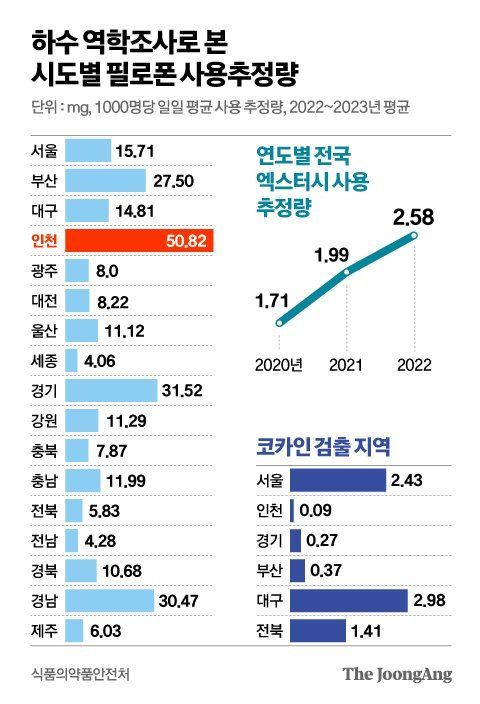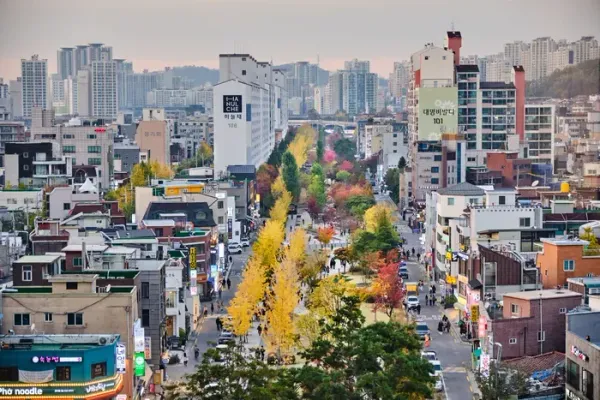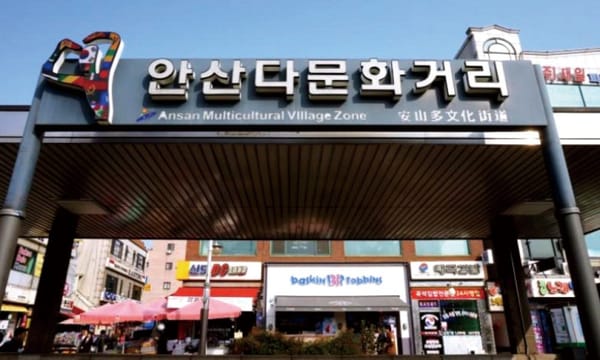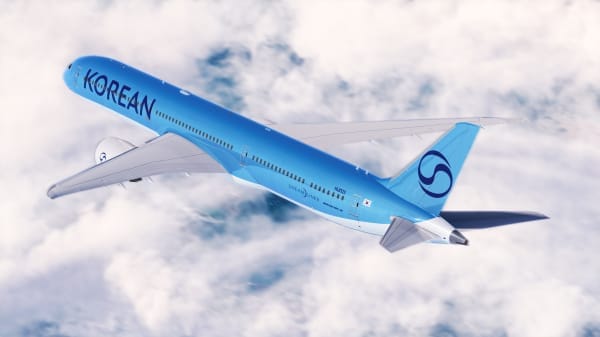Image: National distribution of methamphetamine, cocaine and ecstasy. Credit: JoongAng Ilbo.
South Korea has had a reputation for being drug-free, but the country is beginning to develop its own drug problems - including the kind of problems associated with overzealous prosecution. (See previous coverage, “South Korea’s War on Drugs.”) Wastewater analysis has found narcotics use to be more prevalent in Korea than previously assumed.
From 2020 to 2022, the Ministry of Food and Drug Safety 식품의약품안전처 tracked widespread and rising use of the five major illegal drugs - methamphetamine, cocaine, ecstasy, LSD and amphetamine - in samples from 34 sewage treatment facilities around the nation. The most common drug was meth, which was detected in all 34 facilities three years in a row. Based on sample data, the MFDS estimated nationwide meth usage of 21.8 milligrams per 1,000 people per day, yielding an estimate (at approximately 30 milligrams of meth in a typical dose) of around 51k Koreans using meth each day.
Among localities, Incheon 인천 had the most prevalent use of methamphetamine (50.82 milligrams per 1,000 people per day,) followed by Gyeonggi-do Province 경기도 and Gyeongsangnam-do Province 경상남도. Incheon’s lead is perhaps unsurprising, as the port city is often a gateway for smuggling. More surprising was the national distribution of cocaine: the inland city of Daegu 대구 led the country in cocaine usage (2.98 milligrams per 1,000 people per day), outpacing Seoul 서울 (2.42) and Jeollabuk-do Province 전라북도 (1.41).








